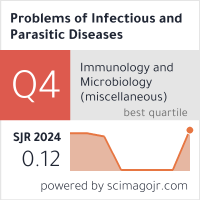PREVALENCE OF ANTI-HBC IN HBSAG-NEGATIVE POPULATION
SCREENING OF PATIENTS WITH UNSPECIFIED ACUTE HEPATITIS AND REVIEW OF THE LITERATURE
DOI:
https://doi.org/10.58395/pipd.v48i1.31Keywords:
HBV, anti-HBc, acute hepatitisAbstract
Background. Among the various serological markers employed in the hepatitis B virus (HBV) differential laboratory diagnosis, serum HBsAg is considered the most reliable. In order to characterise the HBV infection, another important diagnostic marker is employed – the HBc antibody (anti-HBc). There are three categories of anti-HBc-positive individuals: patients with HBV immunity, patients with chronic HBV and individuals with the so-called isolated anti-HBc pattern. The current study aimed to evaluate the presence of anti-HBc in patients negative for HBsAg whose clinical diagnosis was acute viral hepatitis.
Material and methods. A total of 88 specimens were examined, of which 75 sera were from prospective patients diagnosed with acute viral hepatitis, and 13 sera from breast milk donors. Antibodies against the hepatitis B core antigen were detected by enzyme-linked immunosorbent assay (ELISA).
Results. Twenty-eight (32%) of all tested samples were positive for anti-HBc. Nineteen samples belonged to male and 9 to female patients. One positive sample was from a breast milk donor. Two age groups, namely 46-55 years and 56-65 years, demonstrated the highest rate of anti-HBc positivity. Among the other age groups positivity rates varied from 15% to 36%. The results demonstrated a linear trend of increasing anti-HBc prevalence with increasing age.
Conclusions. Considering the highest rate of anti-HBc positivity being demonstrated in the age range 46-65 years, it could be assumed that a sufficient number of risk factors accumulate over time resulting in greater population susceptibility to HBV infection.
Downloads
References
Downloads
Published
Versions
- 2020-05-13 (2)
- 2020-05-12 (1)






